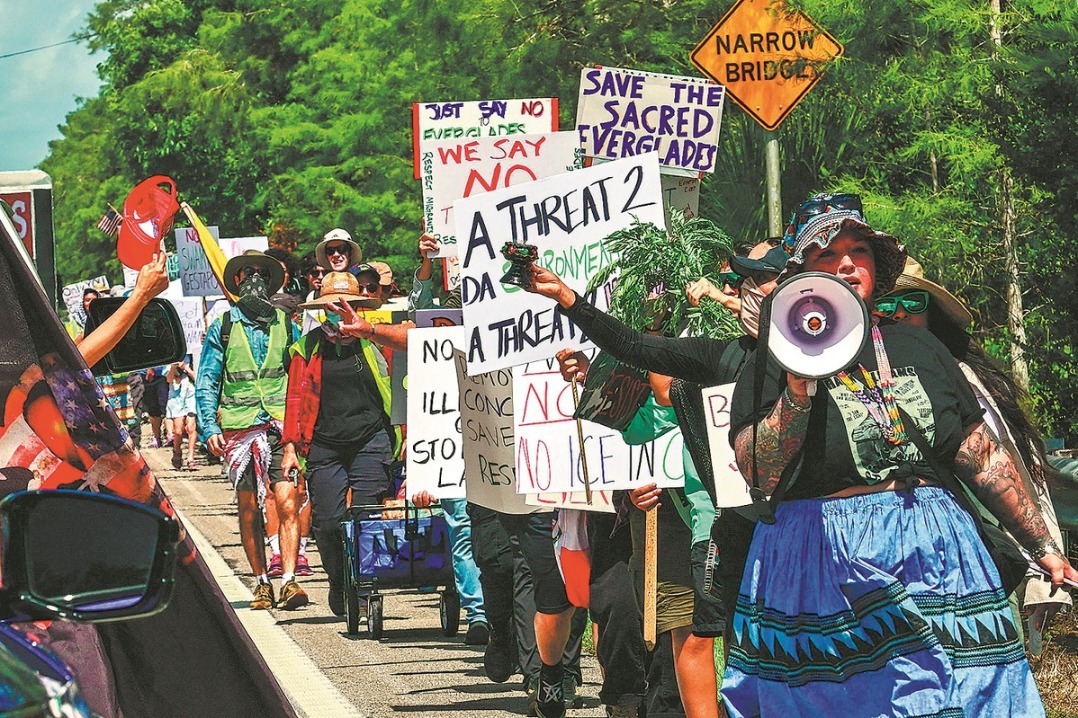Protecting the Rights and Interests of Persons with Disabilities in the PRC

VI. Basic Life and Social Security
The social security system for persons with disabilities has been steadily improved. They enjoy social assistance, welfare and insurance benefits according to regulations, and lead a higher-quality life with a greater sense of gain.
Persons with disabilities have equal rights to social security. Following the principles of equality and nondiscrimination, the Chinese government protects the right to social security for all citizens, including persons with disabilities. The Constitution of the People's Republic of China stipulates: "Citizens have the right to material assistance from the state and society when they are old, ill or disabled," and "the state and society ensure the livelihood of disabled members of the armed forces, provide pensions to the families of martyrs and give preferential treatment to the families of military personnel. The state and society help make arrangements for the work, livelihood and education of the blind, deaf-mute and other handicapped citizens". The Law of the People's Republic of China on the Protection of Persons with Disabilities states that "the state shall protect the right of persons with disabilities to various social security". The Social Insurance Law of the People's Republic of China, Interim Measures for Social Assistance, Regulations on Work-related Injury Insurance, Regulations on Pensions and Preferential Treatments for Servicemen, and some other laws and regulations have specific provisions on the right of persons with disabilities to social security.
The Chinese government undertakes a more positive obligation to ensure the right of persons with disabilities to social security. It includes eligible unemployed adults with severe disabilities in the system of minimum living allowances for single-person households, subsidizes impoverished persons with disabilities and those with severe disabilities in their social insurance, and gives preferential social treatment to persons with disabilities.
The living security system for persons with disabilities has been improved. Following the principle of "universal benefit plus special treatment", the Chinese government protects the basic subsistence right of persons with disabilities by improving the social assistance system. At the same time, it makes legal provision for priority assistance to impoverished disabled people, severely disabled people, and households with more than one disabled member, and takes comprehensive measures to meet their basic living needs. By March 2018, more than 9 million persons with disabilities had received urban or rural subsistence allowances. The "Directives on Further Improving the Assistance and Support System for People Living in Dire Poverty", issued by the State Council, has been implemented, which includes nearly 900,000 persons with disabilities in the scope of assistance and support for the destitute.
In the management and renovation of public rental housing and old residential areas in urban areas, priority is given to poor people with disabilities. In 2018, 620,000 persons with disabilities enjoyed public rental housing security. All localities help persons with disabilities to renovate their dilapidated houses through loans with discounted interest. By 2018, the central finance had supported 1.77 million rural poor households with one or more disabled members to renovate their dilapidated houses. Since 2017, the central government has supported four key groups to renovate dilapidated houses, including rural poor households with one or more disabled members, providing an average subsidy of RMB14,000 per household.
Eligible impoverished persons with disabilities are covered by medical assistance, and receive subsidies for basic medical insurance; they also receive subsidies, based on relevant regulations, for unaffordable out-of-pocket medical expenses not covered by the basic medical insurance, serious disease insurance and other supplementary medical insurance. Some provinces and municipalities give preferential policies and subsidies to low-income families with one or more disabled members for the use of domestic water, electricity, gas and heating, and other basic living expenses.
A welfare system for persons with disabilities has been established. Systems for providing living allowances for poor people with disabilities and nursing subsidies for severely disabled persons have been established. In 2018, more than 21.9 million disabled people benefited from the systems, receiving subsidies of more than RMB23 billion. Vigorous efforts have been made to develop care services, and the number of care facilities for persons with disabilities has increased year by year. By 2018, there were 791 care facilities around China with a total floor area of 2.15 million sq m, and 8,435 care institutions providing residential care services for 223,000 and home services for 888,000 disabled persons. Mechanisms for purchasing such care services, assessment and supervision, and personnel training in this field have been improved; national standards for care services have been formulated; and social forces are encouraged to engage in this work. Through all these efforts, persons with disabilities now have access to multilevel and diverse care services. In accordance with the national plan for accelerating the process toward prosperity for persons with disabilities, the Chinese government has sped up the development of rural care services and a model of rural care with poor and severely disabled people as the major targets.
Parks, tourist attractions, and public cultural and sports facilities are open to persons with disabilities free of charge or at a discount. Fuel subsidies are granted to people with motorized wheelchairs. Pensions and preferential treatment are given to service veterans, police officers, and other special groups with disabilities. Most cities offer conveniences and benefits to persons with disabilities on public transport.
Coverage of social insurance for persons with disabilities has continued to expand. The Chinese government has adopted an insurance regime of universal coverage, under which more support is given to persons with disabilities, insurance subsidies are granted to enterprises employing disabled people with difficulties in finding jobs, and subsidies are granted to impoverished disabled persons and severely disabled persons in both urban and rural areas. By 2018, 25.61 million persons with disabilities had been covered by urban and rural social old-age insurance, and 10.24 million received pensions. 5.76 million of the 5.95 million persons with severe disabilities received insurance subsidies from the government, 96.8 percent had their old-age insurance premiums paid on their behalf, and another 2.98 million persons with mild disabilities had their old-age insurance premiums paid by their employers in full or partially. In recent years, the numbers and proportion of persons with disabilities being covered by various social insurances have continued to grow. In 2018, 79.2 percent of residents with certified disabilities were covered by the old-age insurance.
Pilot work has been done to carry out and improve social insurance systems related to persons with disabilities. In 2010, the State Council revised the Regulations on Work-related Injury Insurance to increase the compensation standards for work-related injuries. In 2018, 239 million people took out work-related injury insurance policies, 569,000 people received evaluation of the degree of their disabilities, and almost 2 million people were granted work-related injury compensations. In some areas, an accident insurance system for persons with disabilities has been established with financial subsidies for those insured, which alleviates the financial pressure on families with one or more disabled members. Pilot work has been done to implement a long-term care insurance system in 15 cities, under which the cost of basic care services for eligible persons with long-term disabilities will be paid in accordance with the regulations, which reduces the burden of care for families with one or more disabled members.
Poverty eradication for persons with disabilities has been advanced. Since the 18th CPC National Congress, the government has included poverty eradication for people with disabilities into the national strategy as an important element, and offers support in system design, policy arrangements, and project implementation. In 2018, the CPC Central Committee and the State Council issued the "Directives on Winning the Three-year Poverty Eradication Campaign", which designates a special section to poverty eradication activities for impoverished people with disabilities to ensure they achieve moderate prosperity with the rest of the country by 2020. Twenty-six departments, including the State Council Leading Group for Poverty Alleviation and Development, National Development and Reform Commission, and CDPF, formulated the "Action Plan on Poverty Eradication for Impoverished Persons with Disabilities (2016-2020)" and supporting programs on lifting these people out of poverty through e-commerce or industrial development. Financial investment has been increased in this regard. From 2011 to 2018, the central finance arranged a total of RMB5.3 billion as subsidized loans for rehabilitation-based poverty alleviation, benefiting 350,000 poor people with disabilities. Since the targeted poverty alleviation strategy was established, the government has registered more than 6 million persons with disabilities as poverty-stricken households in need of help. By 2018, the number of registered poor people with disabilities had decreased to 1.7 million.


































